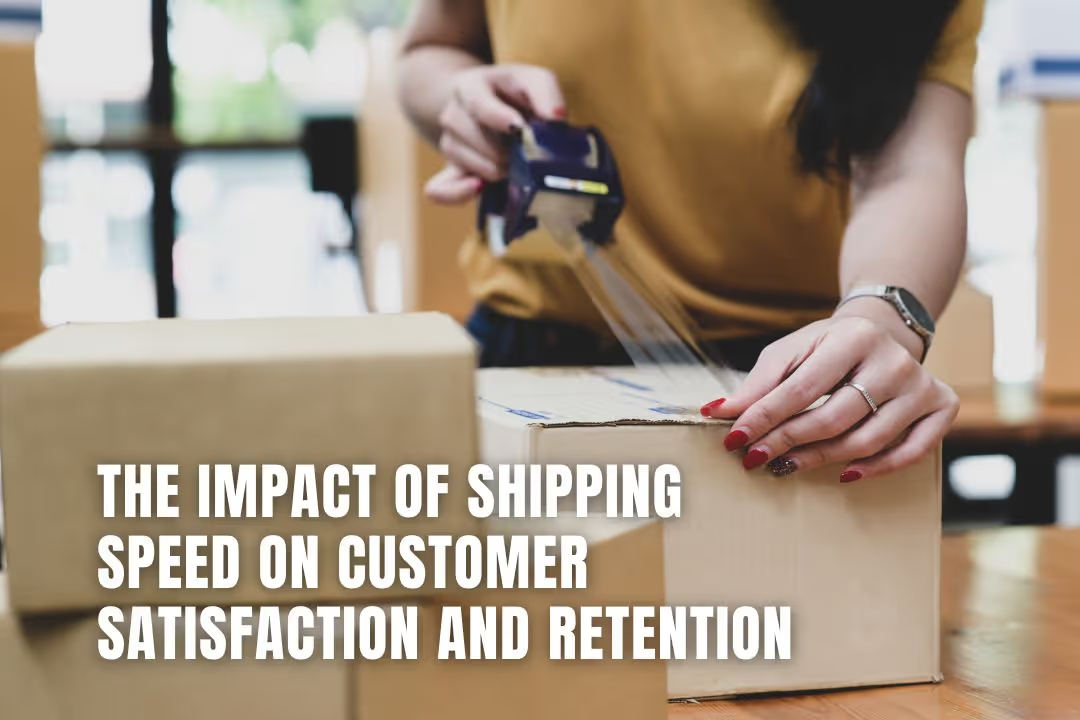
With the fast pace of business in today's competitive environment, shipping speed has emerged as a critical variable that shapes customer satisfaction and retention. In a world where everything seems just a click away, instant gratification needs to define the speed with which the products should ideally arrive-it is a key constituent of the whole shopping experience. The general rule of thumb is that businesses capable of offering swift, reliable means of delivery will generally have highly satisfied customers who demonstrate much stronger brand loyalty, while the companies with generally slower delivery options are usually incapable of meeting these expectations. We examine in this article how shipping speed affects customer behaviour and what can be done by businesses to fulfill needs for faster delivery.
Over the last couple of years, the delivery bar has been set a little higher. The success and influence of giants in e-commerce like Amazon have caused consumers to want shipping services that will take no more than days or hours. This trend has influenced businesses to rethink their shipping strategy in hopes of meeting the demand of their customers. The slow delivery times today are more than an inconvenience; they can translate into negative reviews and abandoned carts, hence the probable loss of customers. Because of that, speed and reliability have to be implemented into the shipping for those businesses that try to be on top of their game.
Shipping speed doesn't influence the customer's immediate shopping experience but long-term implications in customer loyalty. With it, fast delivery will emotionally attach your customers to your brand; they would feel vital and appreciated. When customers' deliveries are affected in good time, they are likely to make more orders, recommend your business, and ensure buying from the company more often. Bad or irregular shipping will keep customers frustrated as a result of the inability to order in real time, reducing sales and weakening your brand. Sometimes, it may be the speed of delivery that can make a customer come back for more at the same business or take their business elsewhere.
In the cutthroat market of today, shipping speed can be the major competitive advantage. Providing faster time than rivals generally makes the difference in drawing customers for many businesses. For example, route optimisation software helps companies find better ways of making deliveries, reducing times of transit and increasing regularity of delivery. With such technology in place, businesses can minimise delays and ensure that packages reach their destinations as promised, dramatically improving customer experiences. As such, customers will more often than not look upon any business that offers speedy deliveries as more reliable and trustworthy, translating into better sales and recognition.
Even though fast shipping remains one of the most essential aspects of customer satisfaction, there are also various challenges faced by businesses in meeting this demand. Meeting this demand for speed can strain operations, especially for smaller businesses that lack the scale of larger competitors. Equally challenging is the need to balance speed and cost: companies must avoid faster shipping methods that lead to unsustainable expenses. Also, the need for speed often results in accidents such as shipping the wrong order or goods damaged. These risks, however, can be minimised if the businesses invest in efficient processes to reduce errors and delays, such as order management systems and real-time tracking, among others, to the delight of the customers.
In as much as quick delivery is imperative, it is equally fundamental for the businesses to clearly communicate shipping expectations to the customers. In case of some delay or changes in the time of delivery, customers always appreciate being informed ASAP. Real-time tracking and updating go a long way in keeping customers satisfied even in cases of problems. A customer who can actually pinpoint at what time his parcel will reach his doorstep is much less likely to become frustrated than one who simply stays in the dark. Clear communication helps the business manage customer expectations, therefore ensuring that issues at the point of delivery do not dent the experience.
Customer satisfaction and retention are also heavily influenced by the speed of delivery for the products sold to the customer. People have become accustomed to quick delivery, and any time this level of service cannot be achieved, there is a tendency for the customer to drift to competitors. Thus, business owners can only ensure a quicker and more reliable shipping experience with improved customer satisfaction with the aid of technology, clear communication, and optimisation of routes of delivery. After all, faster shipping equates to happier customers, and companies focusing on this surely stand to benefit through customer loyalty, leading to continued growth.